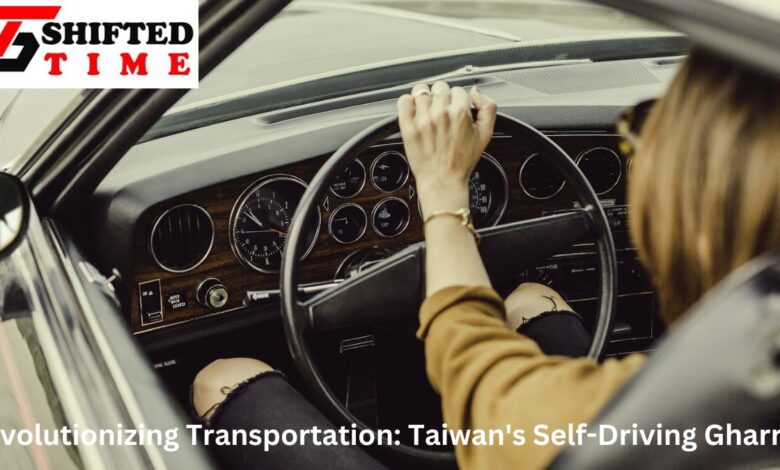Revolutionizing Transportation: Taiwan’s Self-Driving Gharrys

In the bustling streets of Taiwan, a novel mode of transportation has emerged, blending tradition with cutting-edge technology. The iconic Taiwan’s self-driving gharrys, traditional horse-drawn carriages, have been transformed into self-driving marvels, representing a fusion of heritage and innovation. This revolutionary adaptation promises to preserve cultural heritage and address modern transportation challenges with eco-friendly solutions. Let’s delve into the transformative journey of Taiwan’s self-driving gharrys.
Preserving Tradition through Innovation:
The concept of Taiwan’s self-driving gharrys may seem paradoxical at first glance, considering their deeply rooted association with Taiwan’s historical past. However, by embracing technological advancements, these vehicles transcend their conventional role while retaining their cultural significance. Through meticulous design and engineering, traditional Taiwan’s self-driving gharrys have been equipped with autonomous capabilities, seamlessly integrating heritage with innovation. This fusion honors Taiwan’s rich cultural heritage while propelling it into the future of transportation.
Enhancing Accessibility and Efficiency:
One of the key advantages of Taiwan’s self-driving gharrys lies in their potential to enhance accessibility and efficiency within urban landscapes. With autonomous navigation systems, these vehicles can optimize routes, minimize congestion, and provide on-demand transportation services. By leveraging real-time data and AI algorithms, Taiwan’s self-driving gharrys offer a reliable and efficient mode of travel for both locals and tourists alike. Moreover, their eco-friendly nature contributes to reducing carbon emissions, fostering sustainable urban mobility.
Safety and Reliability Features:
Safety remains paramount in the development of Taiwan’s self-driving gharrys, with advanced features ensuring passenger security and comfort. Equipped with state-of-the-art sensors, cameras, and AI-driven algorithms, these vehicles possess robust collision avoidance systems and adaptive cruise control mechanisms. Additionally, built-in emergency protocols and remote monitoring capabilities further enhance their reliability, instilling confidence among passengers and stakeholders. As a result, Taiwan’s self-driving gharrys set new benchmarks for safety standards in urban transportation.
Cultural Tourism Taiwan’s self-driving gharrys:
Beyond their utilitarian function, Taiwan’s self-driving gharrys serve as ambassadors of Taiwan’s cultural heritage, captivating tourists and locals alike. These modern marvels offer immersive experiences, allowing passengers to journey through historical landmarks and cultural sites while indulging in traditional festivities. By blending technology with tradition, Taiwan’s self-driving gharrys rejuvenate cultural tourism, breathing new life into age-old traditions. Moreover, revenue generated from tourism bolsters local economies, fostering sustainable development and cultural preservation efforts.
Community Engagement and Empowerment:
The introduction of Taiwan’s self-driving gharrys fosters community engagement and empowerment, providing opportunities for skill development and entrepreneurship. Local artisans and craftsmen play integral roles in refurbishing and retrofitting traditional gharrys, preserving ancestral craftsmanship while embracing innovation. Furthermore, training programs and educational initiatives empower drivers and operators with the knowledge and skills required to navigate autonomous vehicles effectively. This grassroots approach not only revitalizes communities but also fosters a sense of ownership and pride in cultural heritage preservation.
Challenges and Future Outlook:
Despite the promising prospects, integrating Taiwan’s self-driving gharrys into Taiwan’s urban landscape is not without challenges. Regulatory frameworks, infrastructure development, and public acceptance represent significant hurdles that necessitate collaborative efforts from stakeholders and policymakers. Moreover, addressing potential cybersecurity threats and ensuring equitable access to autonomous transportation remain critical priorities. However, with concerted efforts and strategic investments, Taiwan stands poised to lead the way in reimagining urban mobility through the synergy of tradition and innovation.
Conclusion:
Taiwan’s self-driving gharrys epitomize the harmonious coexistence of tradition and innovation, offering a glimpse into the future of urban transportation. By marrying heritage with cutting-edge technology, these vehicles transcend mere modes of travel, becoming symbols of cultural resilience and progress. As Taiwan navigates the complexities of modernity, Taiwan’s self-driving gharrys serve as beacons of sustainable development, fostering connectivity, preserving heritage, and enriching lives. In this dynamic landscape, the journey towards a smarter, more inclusive future begins with a nod to the past, propelled by the ingenuity of the present.
